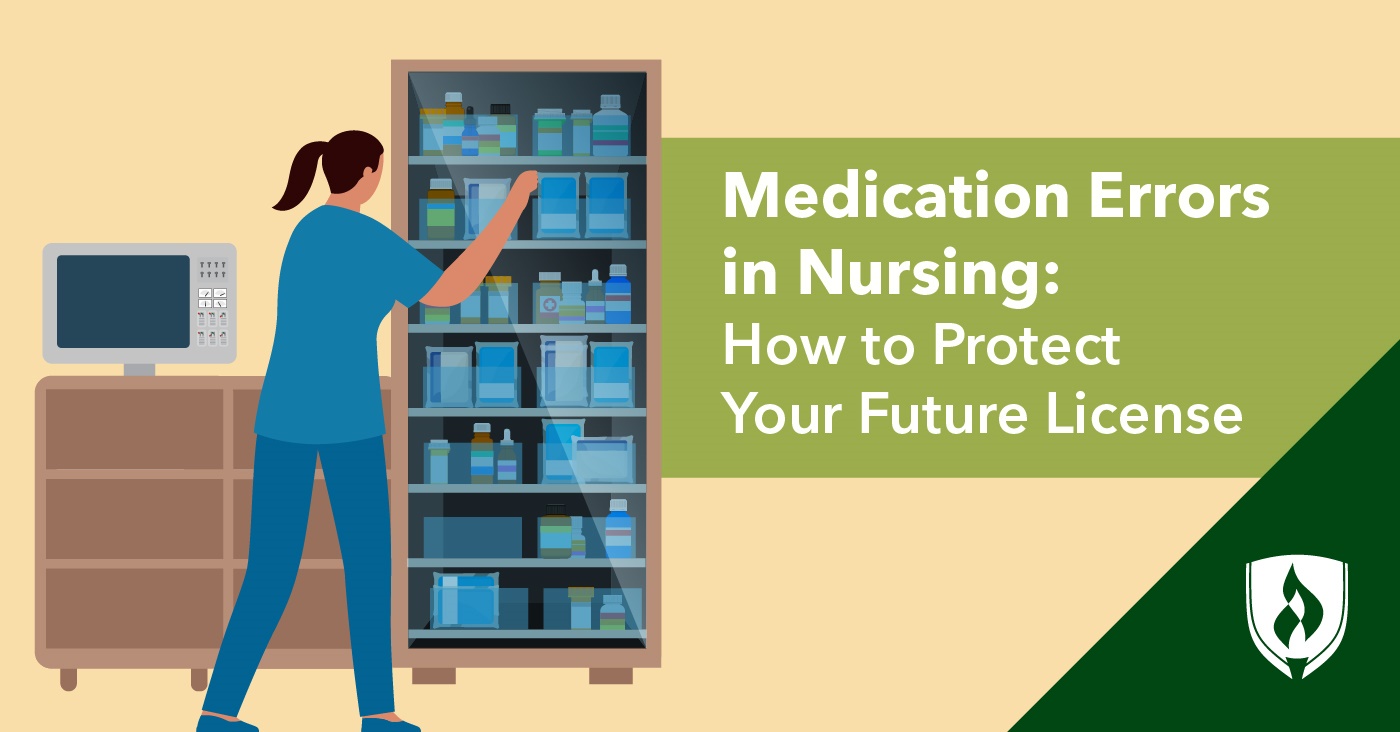
It may have flown under the radar for some, but news of a recent case involving a fatal medication error has caused quite a stir among nursing professionals.
In light of the RaDonda Vaught conviction, newer and experienced nurses alike are reevaluating the way they give medications and how they would report potential errors. With COVID-19 already causing a strain on nursing professionals, some have even been rethinking their career choice altogether.
Tina Vinsant, BSN, CCRN, host of Good Nurse Bad Nurse Podcast, says when she heard the news of Vaught’s conviction during the middle of a CVICU shift, she was discouraged and thought, “I don’t want to be a nurse anymore.”
Donna Schisler, RN, BSN, clinical manager at Advantis Medical Staffing, has been rethinking her own practice. “I have always been a thorough nurse. However, this conviction will push me to be increasingly wary,” she says.
These strong feelings reflect the high stakes of the situation. Not only did Vaught lose her license to practice as a nurse, but she was also criminally convicted and sentenced to three years of probation.
While most nursing medication errors in the past have been handled internally within the health system or in civil court, some worry this case shows a shifting attitude toward pursuing criminal charges for medical mistakes.
If you’re new to the nursing field, concern is completely understandable. But like with any worry, it can help to have a little context—and to put your focus on what you can control to protect your patients and yourself.
What are medication errors?
A medication error is exactly as it sounds—a preventable failure to administer the correct medication. This can be due to incorrect dosages, missed doses or overlooking the potential for adverse effects when two or more medications overlap. The outcome of a medication error can range from relatively harmless to fatal.
Are fatal medication errors common?
Medication errors in general are a common occurrence, and that shouldn’t come as a surprise. With millions of patients regularly taking medication multiple times daily, mistakes are bound to occur.
Fatal medication errors, like in the Vaught cause, are much less common. Each year, 7,000 to 9,000 people die due to medication errors.1 Even if the fatal error was initially made by the prescribing provider or pharmacy, the nurse administering the medication carries a lot of responsibility for double-checking everything that could be wrong with the medication—including the dosage, the route, the patient or the drug.
While administering meds may seem like a relatively simple task on paper, especially with the FDA regulations surrounding everything from packaging to labeling, working as a nurse isn’t always so straightforward. A shift, in any setting, can be chaotic. Even experienced nurses are not immune to getting stressed and overlooking details.
“We are human beings,” says Vinsant. “We get put in these stressful situations and make mistakes.”
6 Ways for nurses to avoid medication errors
Obviously, no well-intentioned nurse wants to make a fatal mistake and be put into a position where they could face consequences as serious as those in the Vaught case. So what can be done? Focus on the following.
1. Avoid distractions when pulling meds
While avoiding distractions may seem obvious, it’s often more easily said than done when your work phone is ringing, call lights are on and coworkers are asking for help. Despite all this, it’s important for nurses to do their best to at least momentarily put those distractions on the back burner and focus on the task at hand.
In automated medication-dispensing machines, drastically different medications can be right next to each other in the same cube. Or the medication a nurse thinks they’re grabbing may not be in the cube the screen directed them to. Even though the machine is automated, nurses need to keep in mind that it is still filled by pharmacy staff and errors can happen. “Remember the person who put the med in there is a human being that can make a mistake,” says Vinsant.
Some hospitals have a square on the floor in front of the medication-dispensing machine meant to visually remind all staff to let the nurse at the machine focus. If you have others looking for your attention while you’re pulling meds, Vinsant recommends letting them know you’re pulling meds and you’ll get back to them when you’re done with your task.
2. Check the five “rights”
Commonly learned in nursing school, the “rights of medication administration” remain applicable in your practice. Quickly reviewing the rights before giving medication can help prevent nursing errors. Though the number of “rights” to check seems to vary depending on where you went to school, there are five consistently taught:
- Right patient: Check the name and the order against each other, use barcodes when possible and ask the patient for two pieces of identifying information (i.e., name and birth date).
- Right medication: Check the medication label against the medication-dispensing machine screen.
- Right dose: Check the order and confirm the calculation if needed.
- Right route: Double-check the order and make sure you are administering to the correct line (ex: IV, central, arterial) if that patient has multiple.
- Right time: Confirm the time and check when the patient received the medication last.
3. Consider how you approach verbal orders
Verbal orders are commonly given by providers to an RN to enter into the electronic health system. Many health systems require that verbal orders are taken by an RN and repeated back in full to the ordering provider to ensure the order is entered correctly. But that practice alone can’t completely get rid of medication errors.
Sometimes, the ordering provider may ask an RN to enter a verbal order that the provider should enter according to policy. It’s perfectly reasonable—and usually in everyone’s best interest—to ask the provider to enter the order themselves in that case.
In emergencies, verbal orders are necessary. Usually, a pharmacist is present during code blues and can give recommendations based on advanced cardiac life support practices and the patient’s chart—but that’s not always the case.
In other emergent situations, when pharmacy isn’t present, you may want to repeat the order back to the ordering provider before administering the medication at the bedside and have another RN in the room verify the medication and dose.
4. Learn hospital procedures
In addition to knowing your health system’s policies on verbal orders, you’ll also want to become familiar with the way other policies are applied on your unit. The medical-surgical unit, for example, is very different from working in the intensive care unit (ICU) or the emergency department (ED).
Vinsant found this out firsthand when training in a progressive care unit (PCU) as a new grad. Her preceptor emphasized the importance of never “overriding” a medication in the medication-dispensing machine. When pulling out a medication from the automated medication-dispensing system, a nurse may override a medication not yet approved by pharmacy for the patient. When Vinsant moved to the ICU, her practice had to change. “Overriding is a way of life in the ICU,” says Vinsant.
Very sick patients can decompensate quickly and may not have time to receive a verbal order and wait for pharmacy to verify it before pulling and administering it. While overriding is often necessary, there are still ways to protect yourself when giving those medications. Since the Vaught conviction, Schisler does her best to wait for the order to be verified by pharmacy when possible.
“It may be inconvenient, but if the impact is to have another safeguard against harming my patients, it is worth the time,” Schisler says.
In emergent cases, Schisler says she has another RN pull the medication with her and verify it. She also asks them to help her check for allergies and potential medication interactions.
5. Chart, chart, chart
Nurses know to chart that you gave the medication and to chart any patient reactions to the medication, but charting absolutely everything they did will help protect their license. Schisler cites the common refrain, “If it isn’t charted, it wasn’t done.”
Even if it can feel tedious, nurses have good reason to stick to detailed documentation of their work. Should any problems arise with the patient, hospital management or a legal team will search through a patient’s file to see if they can find any cause for what happened. Schisler encourages nurses to chart with as much detail as possible. Even if you did make an error, extensive charting can demonstrate your attentiveness to the patient which may help protect you.
“Charting is time-consuming, but in the end, it is your best friend,” says Schisler.
6. Advocate for safe staffing practices
While this step is only partially in the hands of working nurses, it gets to the root of many nurses’ fears and frustrations with a punitive approach to medication errors. Healthcare providers have a financial incentive to maintain a lean staffing model, and that puts nurses in a tough position when they feel forced to choose between efficiency and safety. The more patients a nurse has under their care, the more difficult it is to keep up with thorough preventative measures—so something must give.
Advocacy for safe staffing ratios is one way to help. Another, which is closely intertwined, is pushing for laws and regulations that place more of the accountability on healthcare systems instead of individual nurses.
While criminal prosecutions for medication errors are still very rare, many are worried an embrace of a punitive approach will place additional strain on a workforce that’s already faced considerable challenges during the COVID-19 pandemic.
“We are already hemorrhaging nurses away from hospitals,” Vinsant says. “We at least need to let nurses know they are protected from being charged criminally.”
Nurses looking to push back should consider getting involved with a local nursing union, learning more about contract negotiations and joining city- or state-wide efforts to fight for safe staffing.
Find your why
There’s no question that nursing can come with its challenges—difficult patients, long shifts and a lot important of responsibilities are an expected burden. While time will tell if medication error prosecutions become a trend, it never hurts to evaluate your approach and do what you can to protect yourself and your patients.
It also doesn’t hurt to take some time to reflect on why you chose to pursue nursing in the first place. Our article “Why Nursing? 10 Reasons to Become a Nurse” can help with that.
1Rayhan A. Tariq, Rishik Vashisht, Ankur Sinha, Yevgeniya Scherback, “Medication Dispensing Errors and Prevention,” StatPearls, November 14, 2021, [accessed May 2022] https://www.ncbi.nlm.nih.gov/books/NBK519065/.




